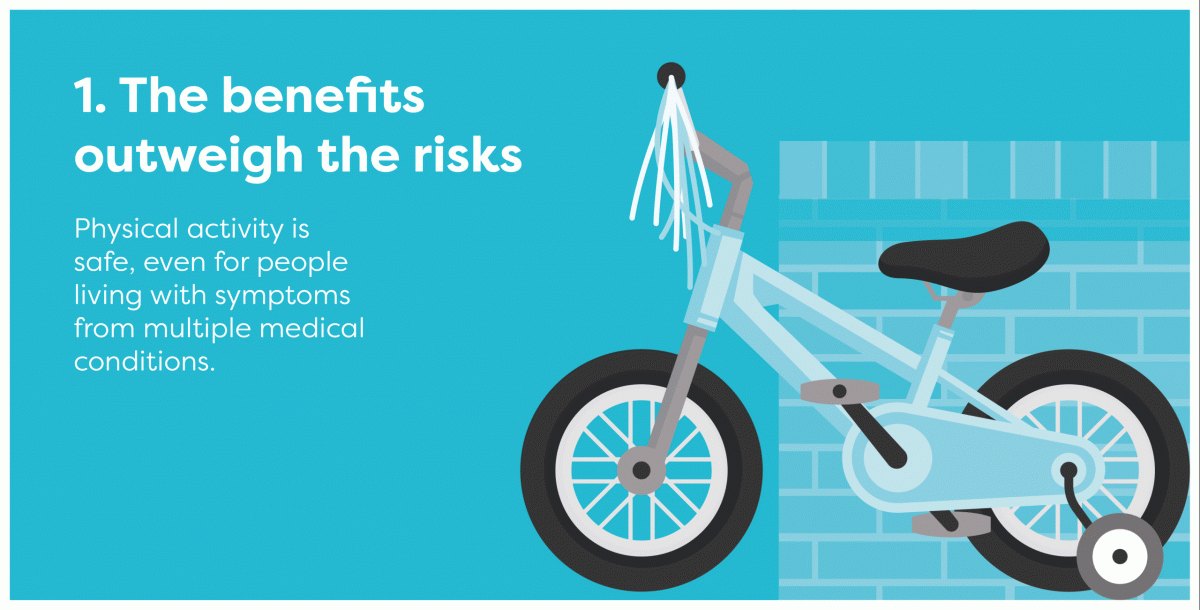Benefits of physical activity outweigh the risks for people with long-term conditions: BJSM paper
Long-standing fears that people with stable long-term ailments risk harming themselves if they increase their physical activity levels are largely unfounded, according to an article in the British Journal of Sports Medicine (BJSM).
Two of the paper’s five authors – Hamish Reid and Natasha Jones – are clinical directors of the Edinburgh-based Moving Medicine initiative, which was developed by the Faculty of Sport and Exercise Medicine. Dr Reid and Dr Jones also hold posts at Sheffield Hallam University and Oxford University Hospitals NHS Trust, respectively. Last month, Dr Jones was appointed as president of the faculty, which has more than 700 active members.
The authors wrote the paper on behalf of a physical activity risk consensus group, which gathered views from experts in the field through a variety of research methods, including a Delphi study.

In a bid to help healthcare professionals engage people in conversations about their fears of exercising more, the paper presents a series of ‘symptom/syndrome statements’, which focus on eight topics: musculoskeletal (MSK) pain; fatigue; shortness of breath; cardiac chest pain; palpitations, dysglycaemia; cognitive impairment; and falls and frailty.
In the section tackling MSK pain, for example, the authors state: ‘For people who experience musculoskeletal (MSK) pain as part of their medical condition, physical activity will not increase pain in the long term. A temporary increase in pain levels is common when starting a new physical activity, until the body adapts, and people should be counselled to expect this.'
They note: 'There is no evidence to suggest this pain correlates with tissue damage or adverse events in the absence of new injury (acute fracture/acute soft tissue injury).’
Falls and frailty
The section addressing falls and frailty issues includes the following statement: ‘Frail, inactive people have much to gain from increasing physical activity levels and building strength and balance, including those with osteoporosis. Even small improvements in strength and balance can reduce a frail individual’s risk of falling and improve their confidence.
It continues: ‘Recommendations for physical activity should be tailored to the functional and cognitive capacity of each individual. This can be further supported by environmental aids and adaptation, such as seated exercise plans, and it may be helpful for physical activity to be accompanied.’
Building motivation
In one of a series of five ‘impact statements’, the authors admit that promoting physical activity ‘is not as easy as just telling someone to move more’. They note: 'Successful opportunistic brief advice helps build motivation and confidence to become more physically active. This can be consolidated at further healthcare visits to support lasting behaviour change.
'Advice from healthcare professionals should consider the concerns of individuals and their carers, as well as individual preference, symptoms, functional capacity, psychosocial factors, social support and environmental considerations.'
No need for routine 'medical clearance'
We challenge recommendations that individuals with stable LTCs [long-term conditions] require medical clearance before autonomously increasing their physical activity levels [Hamish Reid et al.]
Elsewhere, the authors attempt to debunk the notion that people should seek a doctor’s guidance before upping their physical activity levels. ‘We challenge recommendations that individuals with stable LTCs [long-term conditions] require medical clearance before autonomously increasing their physical activity levels,’ they note.
‘We suggest that routine preparticipation screening in this group poses an unnecessary barrier to self-directed physical activity and engagement with the physical activity, sport and leisure sectors. Our findings suggest that the need for medical guidance, as opposed to clearance, should be determined by individuals with specific concerns about active symptoms.’
Further research
The authors acknowledge that the list of medical conditions covered in the guidance is not exhaustive. ‘For instance, we do not include chronic fatigue syndrome and long Covid-19 since evidence on physical activity risk is limited and actively evolving in these areas.
‘We cannot be sure that our symptom-specific statements translate effectively to clinical practice and subsequently to people living with these conditions. This is an important area for future research. Identifying safe and scalable strategies in healthcare to support sustainable behavioural change in the day-to-day lives of inactive people with LTCs will be a powerful asset to population approaches on physical activity,’ they add.
Co-operation is vital
Dr Reid and his colleagues argue that healthcare practitioners acting in isolation will not be able to make substantial changes to the physical activity levels of people with LTCs. ‘We call for healthcare and related sectors to work together to provide continuity of advice and support through clear and consistent messaging. This consensus statement provides a starting point for developing a common language around the specific issue of risk from physical activity.’
To see the full version of the article, titled Benefits outweigh the risks: a consensus statement on the risks of physical activity for people living with long-term conditions, visit: https://bjsm.bmj.com/content/early/2021/12/01/bjsports-2021-104281#F2
The Moving Medicine website offers a series of resources, including some dealing with common medical problems among adults and children, with physiotherapists featuring prominently among the 800-odd specialist who contributed to their development. They include Priya Dasoju, Tracy Barnett, Sarah Holden and Terry Cordrey. To find out more about Moving Medicine, visit: https://movingmedicine.ac.uk
Author: Ian A McMillan
Share it with














